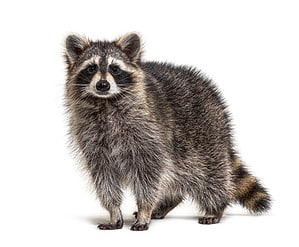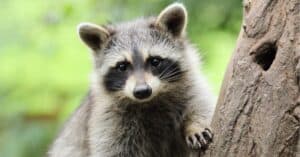Welcome to our blog post on raccoons! In this article, we aim to provide you with valuable insights into these fascinating creatures while offering precautionary tips to ensure your safety. Whether you’re curious about their behavior or looking for ways to protect yourself and your property, join us as we delve into the world of raccoons and discover how coexistence is possible.
Types of Raccoons
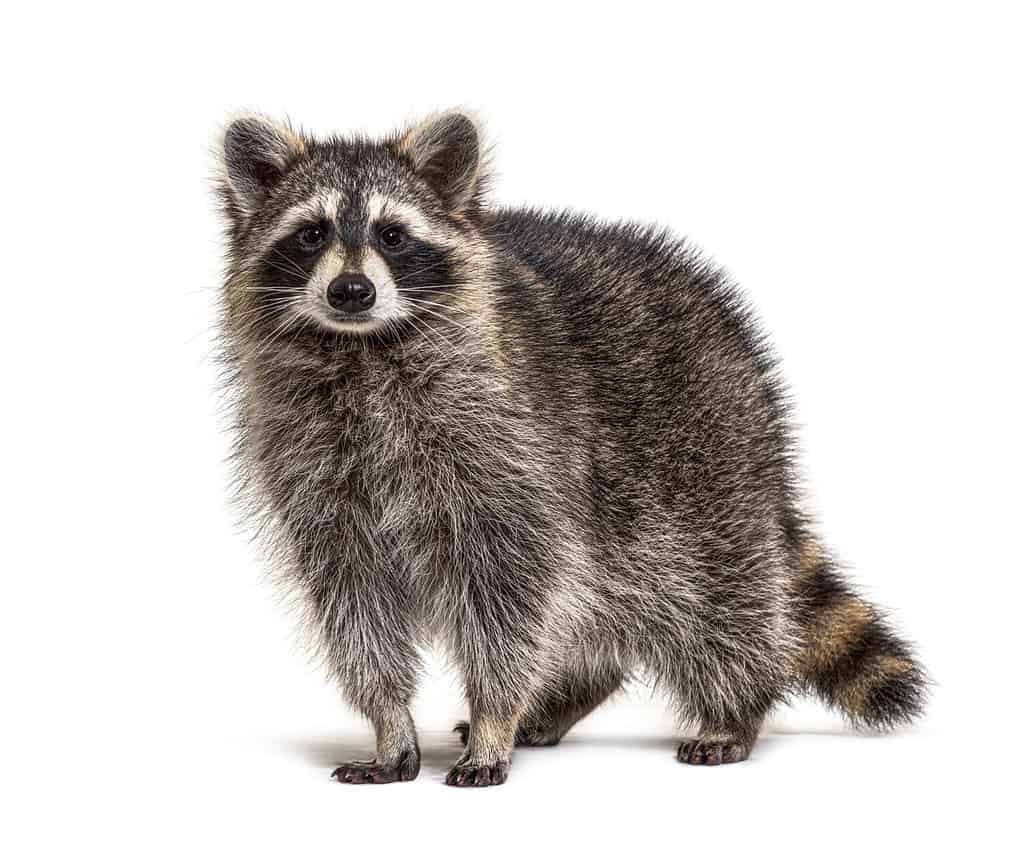
The many subspecies of raccoons all look and act very similar to each other.
©Eric Isselee/Shutterstock.com
Raccoons are highly adaptable mammals that belong to the family Procyonidae. They have a distinctive appearance, with their black mask-like facial markings and ringed tails. Raccoons are omnivorous, meaning they eat both plants and animals.
According to mammal species of the world, there are 3 species and 26 subspecies of raccoons that are all very similar. Some have a very small range and live only on certain islands. The main type of raccoon that you will see in the US is the North American raccoon. North American raccoons live throughout the United States and parts of Canada. They are intelligent and resourceful animals, often raiding garbage cans and making happy homes in urban neighborhoods.
North American raccoons have short, stocky bodies and large, rounded ears. They are mostly gray in color, with a black mask-like facial pattern and a light-colored ringed tail. These raccoons can range in size from 2.5 to 4 feet long and weigh between 10 to 30 pounds.
Raccoons live in a variety of habitats, from forests and woodlands to wetlands and urban areas. They are active at night, foraging for food and building dens. They are very resourceful, using their dexterous front paws to open cans, jars, and doors.
Raccoons are intelligent and curious creatures and can make excellent pets if properly trained and cared for. They are also important members of the ecosystem, helping to control insect populations and disperse seeds.
Diet
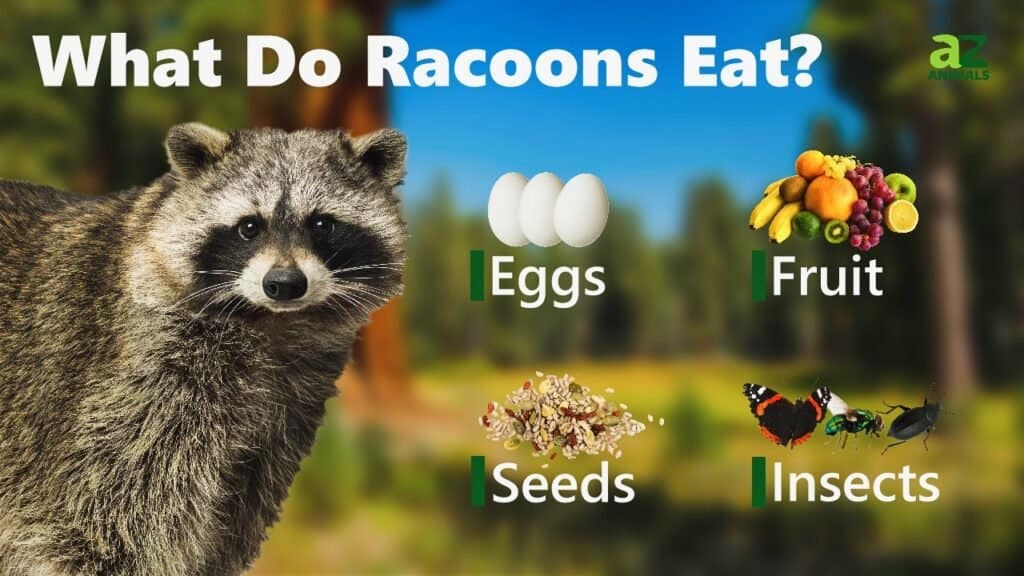
Raccoons are omnivorous mammals whose dietary preferences are incredibly diverse. They are especially skilled at adapting to urban environments, where they scavenge for food in the garbage, gardens, and pet food dishes. In more rural areas, raccoons often forage in streams, ponds, or other water sources for fish, frogs, and other aquatic creatures.
In addition to their omnivorous tendencies, raccoons also have a taste for insects, eggs, and small mammals. They are opportunistic eaters, meaning they will take advantage of any available food source. However, they are especially fond of fruits, vegetables, and nuts, which they find in abundance in many outdoor environments.
The dietary preferences of raccoons can vary greatly depending on the season. In the spring, they will often feast on the buds and flowers of plants, as well as the larvae of insects. During summer, they will look for fruits and nuts that have fallen from trees, as well as the eggs of ground-nesting birds. In the fall, they will eat acorns, beechnuts, and other nuts that have matured for the season. During the winter, they will look for food sources that are less dependent on seasonal availability, such as carrion, pet food, and, of course, garbage.
In addition to their diverse dietary preferences, raccoons are also excellent at adapting to their environment. This means they may adjust their diet according to what is available, which can result in them eating almost anything that can be found in their environment. This makes them incredibly resilient, as they are able to survive in practically any environment as long as there is food available.
Habitat

You can find raccoon nests in hollows of old oak trees, rock crevices, burrows dug by other animals, and tree crotches.
©Georgi Baird/Shutterstock.com
Raccoons are one of the most widespread mammals in the world, native to both urban and wild habitats. In urban environments, they often scavenge for food in residential neighborhoods or around local dumpsters. In the wild, raccoons live in a variety of natural habitats, from forests and wetlands to grasslands and even deserts.
Urban raccoons are known for their resourceful and adaptable behavior. They are able to thrive in a variety of environments where they can easily access food and shelter. In cities, they mainly feed on fruits and vegetables, pet food, and garbage. They can also become quite comfortable living in human-made structures such as attics and garages.
In the wild, raccoons usually build their dens near sources of water, such as rivers, streams, and lakes. They live in burrows in the ground, hollow logs, and tree cavities. They are omnivorous and will feed on a wide variety of foods such as insects, berries, nuts, eggs, and small animals.
Raccoons are highly social animals, living in family groups of up to 20 individuals. In urban areas, they often gather in parks or other areas with plenty of food sources. In the wild, they forage for food in groups during the night and sleep in their dens during the day.
Raccoons are highly intelligent and adaptable animals, and they have been able to successfully colonize both urban and wild habitats. They are an important part of the ecosystem and help to maintain balance in their respective habitats. As human development continues to encroach on natural areas, it is important to recognize the importance of these animals and take steps to protect their habitats.
Behavior
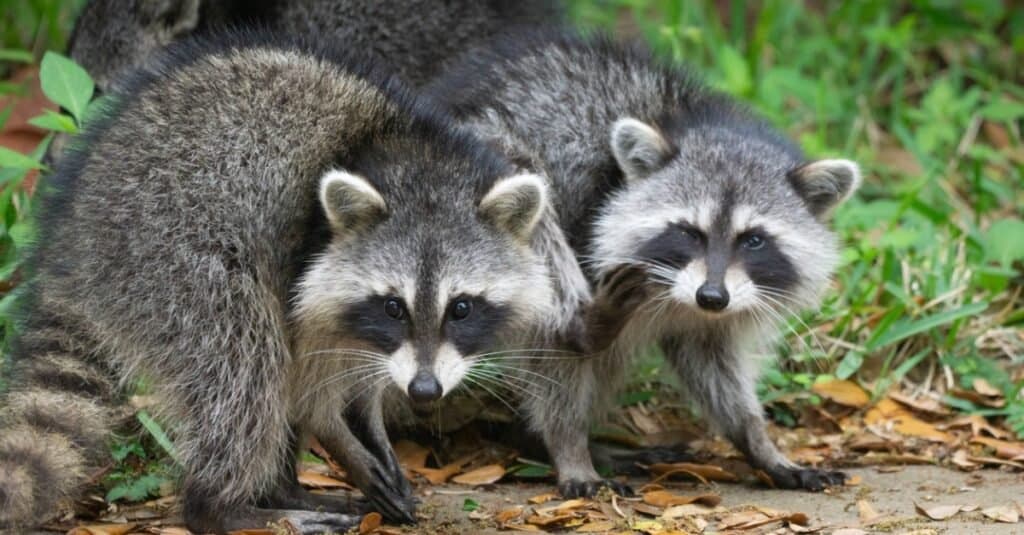
As highly social animals, raccoons prefer to live, hunt, and travel in groups.
©Mark_Sawyer/Shutterstock.com
Raccoons are highly intelligent creatures that are capable of solving complex problems. They know how to use tools to gain access to food, such as opening latches or manipulating levers. They are also able to remember solutions to problems for an extended period of time, showing their great memory.
Raccoons are also highly social and form strong bonds with other members of their family. They are able to recognize the sound of other raccoons and can communicate with them using a variety of vocalizations.
Raccoons are also quite curious and playful. They enjoy exploring new places and will often investigate objects that could potentially be food. They play with each other and even with humans.
Health Risks

Roundworms are one of the diseases that you or your pets can catch from a raccoon.
©iStock.com/Michael Edwards
Raccoons are often seen as cute and cuddly creatures, but it’s important to remember that they can carry diseases and parasites that can be harmful to humans. When interacting with raccoons, it’s important to assess the associated health risks and take the necessary precautions to protect yourself.
There are a variety of diseases and parasites that can be transmitted from raccoons to humans. These include rabies, roundworm, leptospirosis, and Giardia. Rabies is one of the most serious illnesses that can be transmitted from raccoons to humans, and it can be fatal if left untreated. Roundworm can cause serious neurological damage, and Giardia can cause gastrointestinal distress.
If you come in contact with a raccoon, it’s important to wash your hands thoroughly with soap and water to reduce the risk of infection. It’s also important to avoid touching or handling a raccoon, as this can increase the risk of transmission. If you must handle a raccoon, it’s important to wear protective gloves and clothing to reduce the risk of contracting an illness. Additionally, it’s important to avoid feeding raccoons, as this can encourage them to approach humans and increases the risk of transmission.
Precautionary Measures
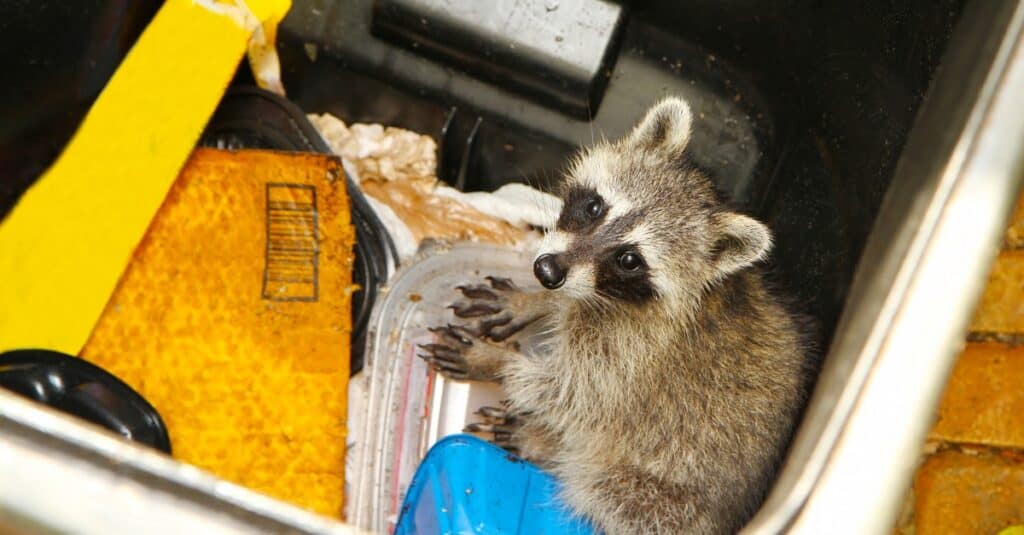
Keeping trash and food stored away is a good measure to prevent raccoons.
©Jillian Cain Photography/Shutterstock.com
Raccoons can be a nuisance to homeowners and businesses if they enter your space. To ensure that you stay protected and avoid unwanted raccoon encounters, here are some practical tips:
- Seal off any potential entry points into your home or business.
- Secure outdoor garbage cans and other sources of food.
- Keep pet food and water indoors and away from raccoons.
- Trim tree limbs and landscaping away from your home or business to eliminate potential pathways.
- Avoid leaving food out in the open, such as on picnic tables.
- Install motion-activated lights or sound machines to deter raccoons.
- If you spot a raccoon, do not approach it. Instead, call your local animal control or wildlife removal service.
Conclusion
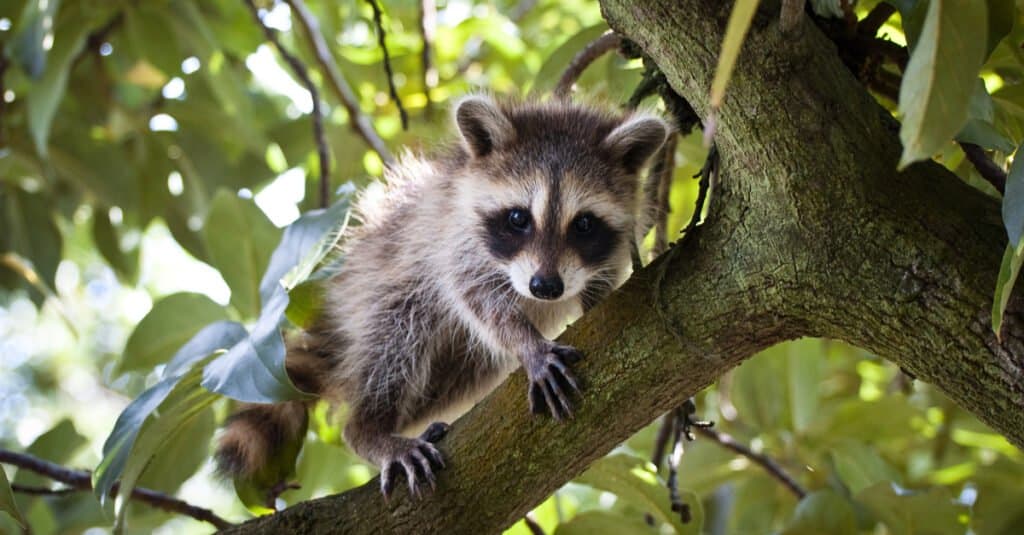
Wild animals, like raccoons, deserve our respect and protection.
©Heiko Kiera/Shutterstock.com
Maintaining a balance between respect for wildlife and safety precautions is essential in order to protect both the environment and people. Wildlife should be respected and preserved while also taking the necessary safety measures to ensure human safety.
One way to achieve this balance is through responsible tourism. Responsible tourism involves traveling with respect for the natural environment, wildlife, and local cultures. By being mindful of the environment, visitors can help to protect wildlife and their habitats while also minimizing their own risks.
In addition, governments should ensure that appropriate safety regulations are in place. For example, it is important to have clear boundaries between designated wildlife areas and areas where people can safely interact with wildlife. This can help to prevent people from entering into dangerous situations with wildlife while still respecting their habitats.
Finally, education is key in striking a balance between respect for wildlife and safety precautions. People need to learn the importance of respecting wildlife and their habitats, as well as the risks associated with interacting with them. By educating people about the importance of this balance, we can help to ensure that both wildlife and people are kept safe.
The photo featured at the top of this post is © L-N/Shutterstock.com
Thank you for reading! Have some feedback for us? Contact the AZ Animals editorial team.




